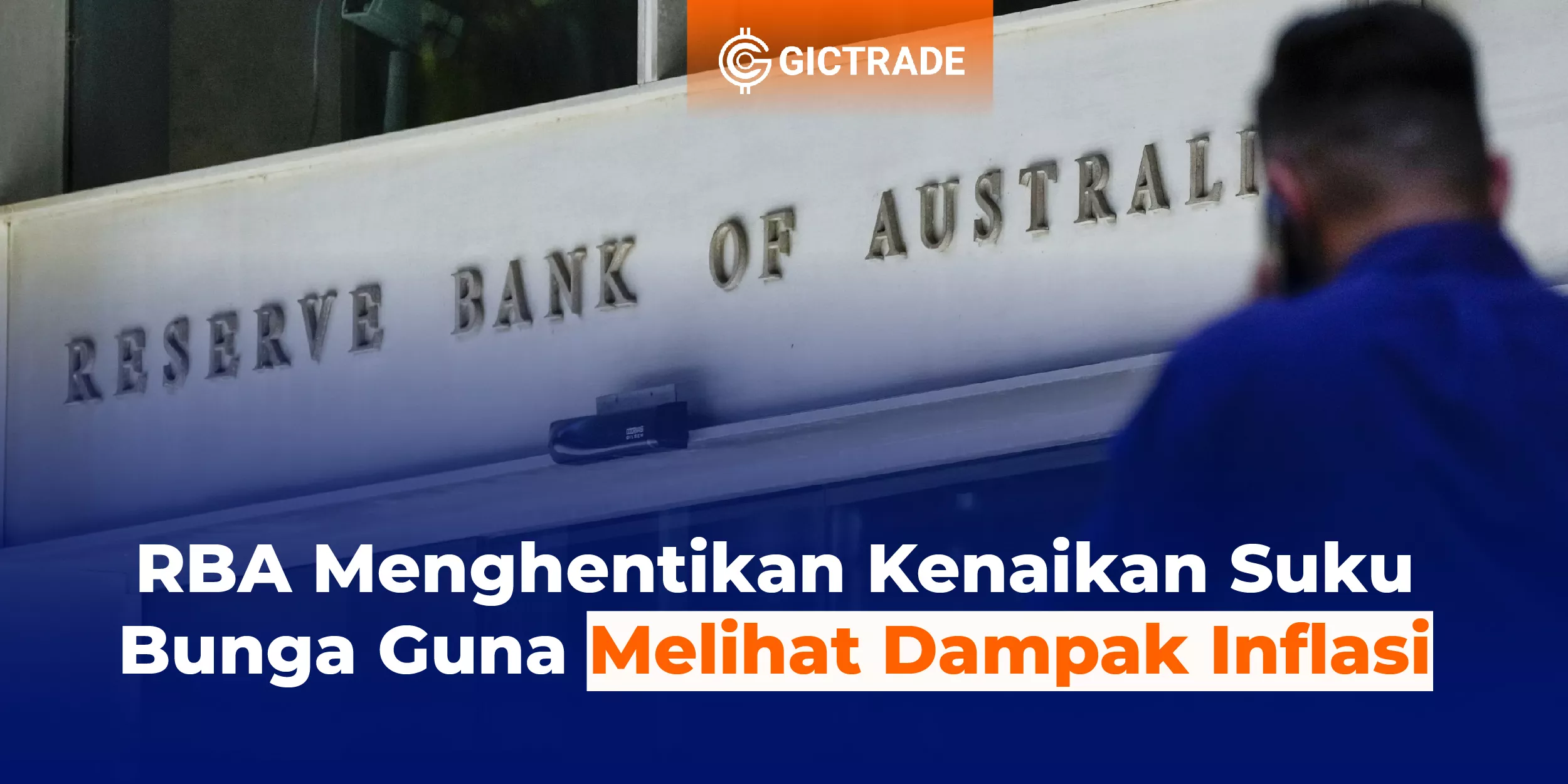On Tuesday, the Reserve Bank of Australia (RBA) decided to keep interest rates at 3.6%, ending a run of 10 consecutive rate hikes.

The decision came after the RBA assessed that the economy was slowing and inflation had peaked. The RBA also stated that it wanted more time to assess the impact of the previous rate hike. Although the RBA decided not to raise interest rates at its April policy meeting, it also warned that some further monetary policy tightening “may be necessary” to ensure that inflation returns to its 2-3% target range. Following the Australian central bank’s decision to keep interest rates on hold, markets reacted with mixed opinions. Some investors expected the RBA to pause rate hikes, while analysts were divided on whether the bank would raise rates again given the persistently high inflation rate. The impact of the RBA’s decision was also seen in the Australian dollar, which fell 0.4% to $0.6758. In addition, the three-year bond futures also rose 9 ticks to 97.14, with the bond futures now also indicating a possible pause at the RBA’s May policy meeting, implying that rate hikes are essentially over. RBA Governor Philip Lowe said the decision to keep rates steady this month gave the Board more time to assess economic conditions and the outlook amid ongoing uncertainty. Lowe also acknowledged that inflation had peaked in the country, and said he expected goods price inflation to moderate over the next few months.
He also noted that household spending had slowed due to the pressure of the cost of living and high interest rates. The RBA recognises that monetary policy takes time to impact the economy and that the full effects of the RBA’s recent rate hikes may not yet be fully seen. This is a reminder that monetary policy has a lag time in affecting the economy, and that changes in monetary policy do not always produce instant results. The RBA’s previous rate hikes reflected an attempt to curb runaway inflation, which peaked at 7.8% in the final quarter of last year and, although it has slowed to 6.8% in February, is still well above the central bank’s target. In this regard, the RBA has introduced a series of rate hikes to curb inflation and support sustainable economic growth. However, flat consumer demand suggests that despite tight labour market conditions and low unemployment, consumers may be more cautious about spending their money, which could slow economic growth.
House prices are showing early signs of a slowdown, but the construction sector is struggling with high costs and several homebuilders have gone bankrupt. This suggests that there are pressures across the economy. Also a risk ahead is the first quarter inflation data due in late April. Rents and utility prices are still rising rapidly, which could put pressure on the RBA to raise interest rates again. Some economists say the inflation data could still surprise. According to analysts at Capital Economics, they still expect the RBA to raise interest rates by 25 basis points in May before ending its hiking cycle. They also think services inflation will remain high, so they do not expect a rate cut before the second quarter of 2024.
Despite turmoil in international financial markets over problems at US regional banks and the Credit Suisse takeover that has raised concerns about tighter lending conditions, RBA Governor Philip Lowe said Australia’s banking system is strong and well-positioned to provide credit to the economy. This could ease pressure on the RBA to raise interest rates again as there are no concerns about significant credit problems in Australia. However, markets are still pricing in the possibility of a further rate cut from the Federal Reserve later in the year. The RBA does not expect turmoil in the US and Swiss banking systems to affect credit availability in Australia, according to Sean Langcake, head of macroeconomic forecasting for BIS Oxford Economics. However, tighter financial conditions are expected to act to dampen inflation and remove some of the need for further interest rate increases. This means that even if the RBA is not affected by turmoil in international financial markets, tighter financial conditions could help control inflation and remove the need for further interest rate increases.
|
also read : AUD/USD Climbs Higher 0.6750 As Rates Pause |
Warning!
This analysis is based on fundamental and technical views from trusted sources, not advice or invitation. Always remember that this content is intended to enrich the reader's information. Always use independent research first regarding other forex information to be used as a reference in your trading.

 Last:
Last: 



